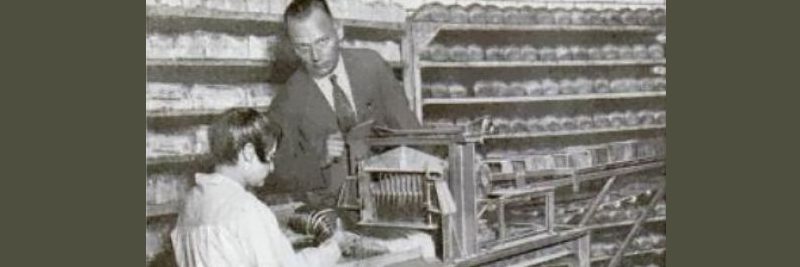Have you ever tried to slice a loaf of home-cooked bread on a cutting board? The first slices tend to go fine, especially if you’ve got a sharp knife. Once you get down to the last few pieces of bread that need to be sliced, however, the loaf starts to slip around a bit and it becomes an awkward dance of moving your fingers around so you don’t slice them and then bread at the same time. Now imagine taking that problem onto a commercial scale and you’ve got a lot of time on your hands just to slice bread.
That’s what Otto Frederick was thinking over 100 years ago and that led him to think that there had to be a better way. His bread slicing machine could uniformly slice an entire loaf of bread at the same time and the first commercial use of his machine came in 1928 at a Missouri bakery. His invention, however, was a long time in the making.
It Took 16 Years For Frederick To Recover From Tragedy
Otto Frederick might be credited with an invention in 1928, but he actually had his first bread slicing machine prototype ready in 1912. It took him 16 years to fully recover from that event, but the time was well worth the wait. The increased speed that bread could be sliced through meant bakeries could spend more time creating instead of slicing, which eventually led to higher revenues. That’s why the phrase of describing something as the “greatest thing since sliced bread” was developed. It really helped this industry out.
Because of this invention, it became a lot easier for people to eat bread on a regular basis. More people began to eat it frequently, thanks to the fact that the slices of bread were thinner and more equal. They even began eating more slices at a time and that made spreads a more popular item, as well as sandwiches.
The Infamous Ban on Sliced Bread the US Attempted
With World War II going on and food reserves short in many areas, US officials targeted the sliced bread that Otto Frederick helped to create because of this premise: sliced bread dried out more quickly and so it needed to have a heavier wrapping than an unsliced loaf of bread. The real reason for the ban was that flour prices had risen 10% and that meant bread prices were on the rise as well. It also would mean more bread could go to soldiers fighting overseas.
The ban on sliced bread was implemented on January 18, 1943. It only lasted two months, however, because the protest levels were high. A quick announcement that discussed how wax paper could solve the problem that led to the “ban” were quickly released and everyone got to enjoy their sliced bread once again.
The next time you open up a loaf of bread that has been pre-sliced, think about Otto Frederick. This man, based out of Davenport, Iowa was able to change not just an entire industry, but the entire culture of the world because his one invention was able to make bread more accessible to people. That’s what the power of innovation can do.
Strong proponent of individual liberty and free speech. My goal is to present information that expands our awareness of crucial issues and exposes the manufactured illusion of freedom that we are sold in America. Question everything because nothing is what it seems.




















